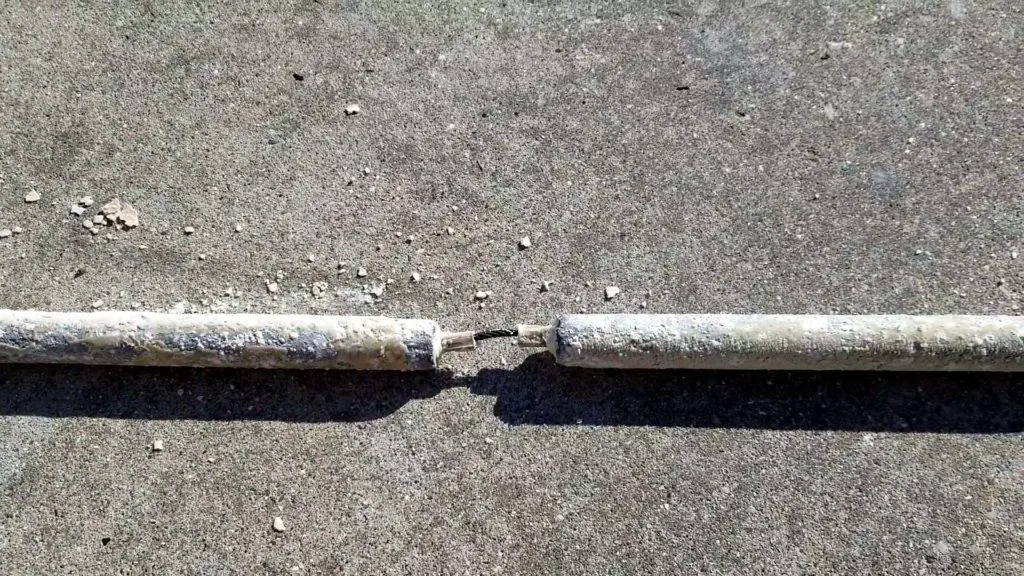Replacing the anode rod or removing it for cleaning is a normal part of water heater maintenance. If, however, you’ve never done it before and your tank is several years old, there’s a very good chance that the anode rod is so stuck that your tank will spin when trying to remove it.
Once the tank spins, you won’t be able to remove it. I dealt with this headache for hours until I found this solution!
Generally, you can remove a stuck anode rod from a water heater by using a cheater pipe to increase leverage, and by securing the tank from spinning as you pull on the ratchet. This can be done with a ratchet strap, some rubber pads, and scrap lumber.
Let’s keep this short and sweet since I know you’re in a hurry and probably already have a headache! Here’s a video if you need a good visual and explanation.
Materials needed to Stop Water Heater Tank from Spinning:
- 1/2″ Ratchet with 1 1/16″ socket – a 1/4″ ratchet will likely break if the anode rod is stuck
- Cheater Pipe to increase leverage when pulling on the ratchet
- 1 Ratchet Strap
- 2-3 Foam stadium cushions or 2-3 rubber car mats to grip the tank and to prevent denting
- Scrap Lumber and Boards – 1-2 flat boards and a single 2×4 or 2×2 will suffice


Instructions to Stop Water Heater from Spinning:
- Run the ratchet strap around your water heater (and under the pressure relief valve piping that runs vertically down to the floor)
- Make sure there are cushions or mats under the ratchet locking assembly and on the opposite site (as well as under the metal hooks on the strap to prevent denting the tank)
- Place some boards along the wall to the right side of the ratchet strap locking assembly and run a scrap 2×4 or 2×2 from the board on the wall to friction fit against the locking assembly
- Using the ratchet, socket, and cheater pipe, slowly start to unscrew the anode rod until the bond is broken

How to Prevent Anode Rod from Getting Stuck in the Future
When you replace or reinstall your anode rod, make sure to use some thread tape before you screw it back in. This will create a better seal for leaks, but it will also prevent the thread metals from corroding and sticking together.
I recommend unscrewing the anode rod yearly just to inspect it. You may need to replace it, or clean it if you have lots of calcium in your water like I do. By breaking the thread seal yearly, you will not need to secure the tank or even use a cheater pipe since corrosion won’t have enough time to build up.
What if My Anode Rod is too Long and I Can’t Remove It?
If you have a standard 4′ anode rod, you might find that you can’t lift it all the way out due to the height of the ceiling above your tank.
In this case, you will need to likely disconnect the hoses at the top of the tank (turn the valves off, of course) and tilt the tank towards yourself.
You will want to empty or partially empty the tank first by connecting a hose to the drain spigot at the bottom of the tank and running the other end outside to your driveway. This will likely take at least 30 minutes to do. If you don’t drain it, you will likely be trying to tilt a 500lb tank (226kg) towards yourself. Not my idea of fun, but you do you.
With the tank tilted towards yourself, pull the rod out and make sure to replace it with a collapsible rod like the one seen below. They will have 3-4 sections that are secured by a heavy gauge wire.

How to Flush Out and Vacuum a Water Heater
If you need to stop your water heater from “popping” and clean out the sediment inside, I have a full step-by-step article here, and you can also check out the video I made that guides you through the process as well.
